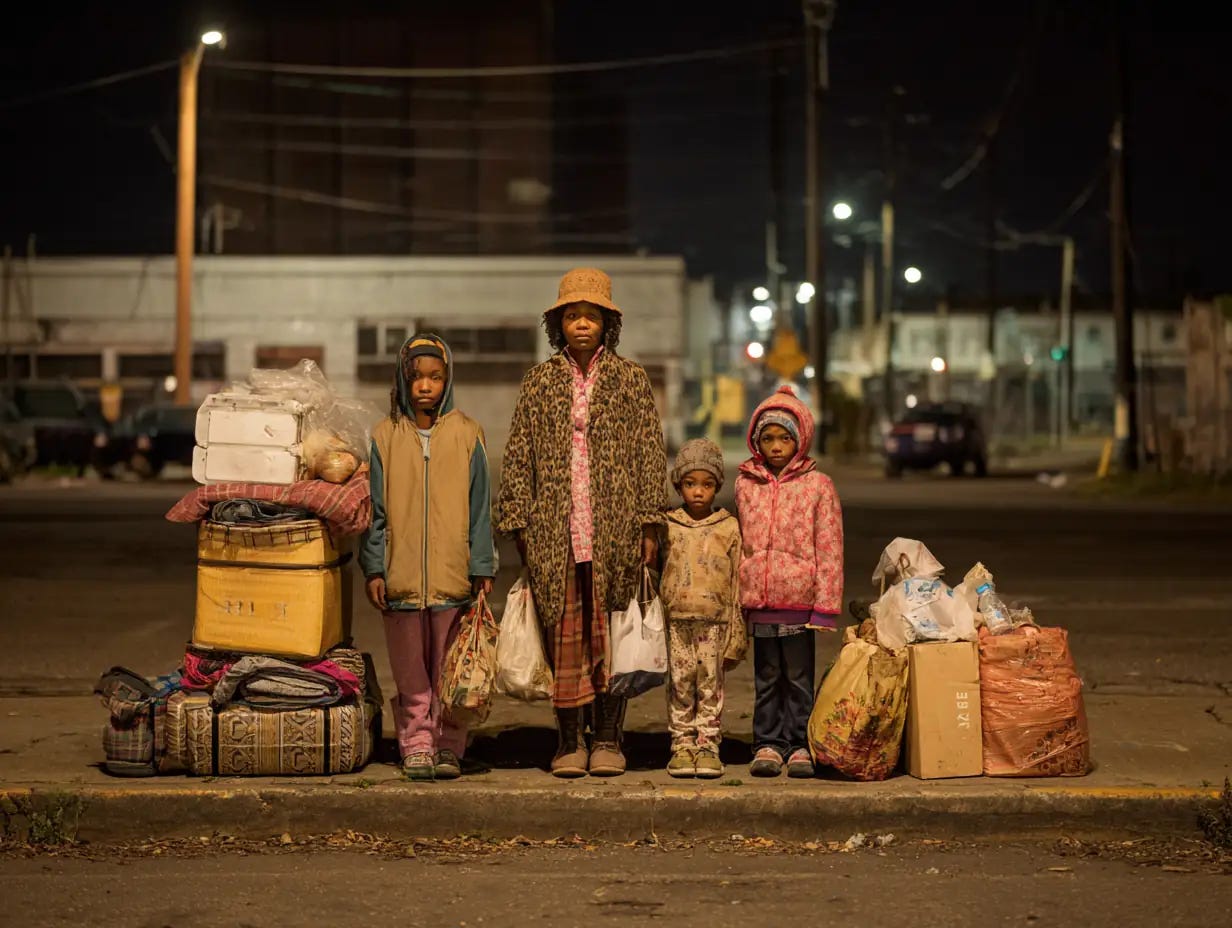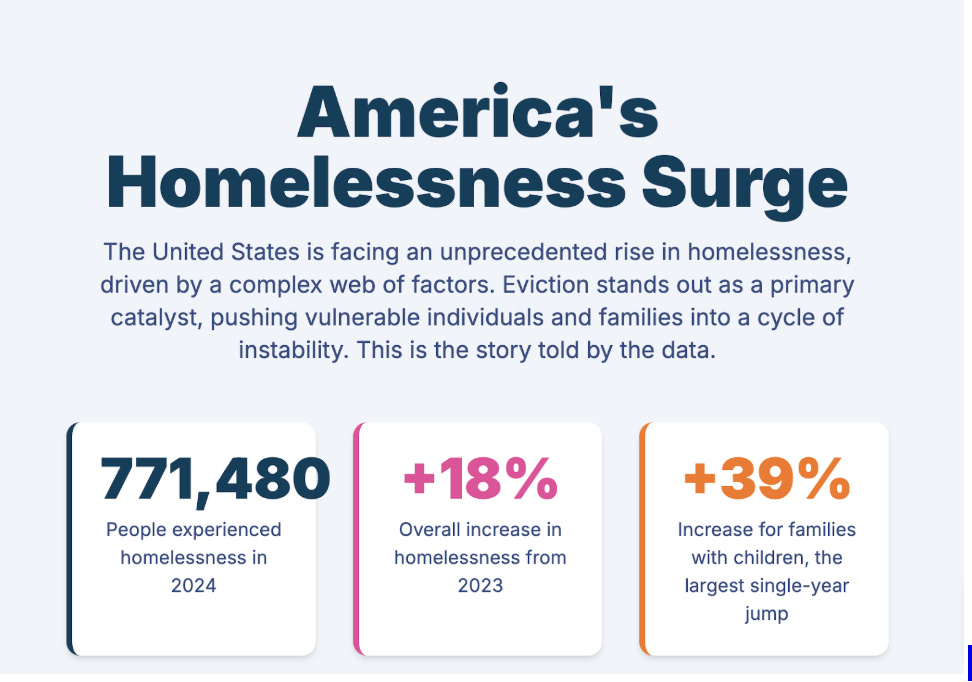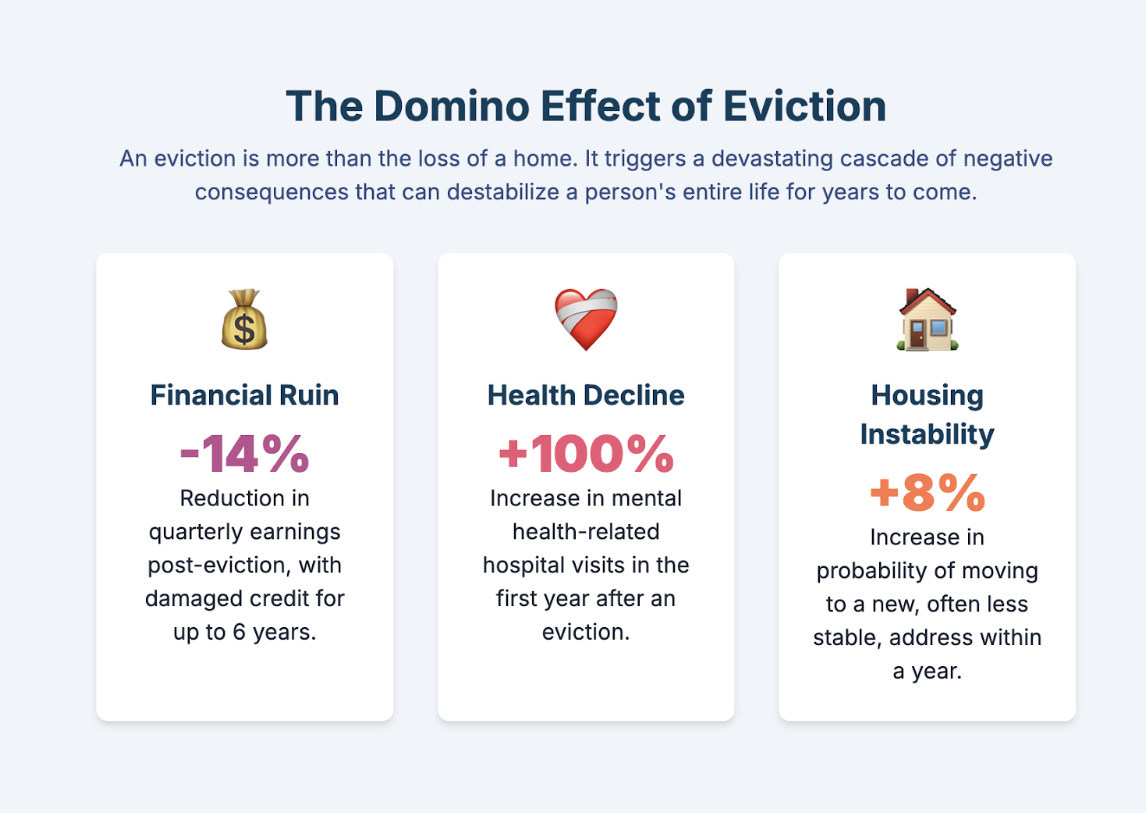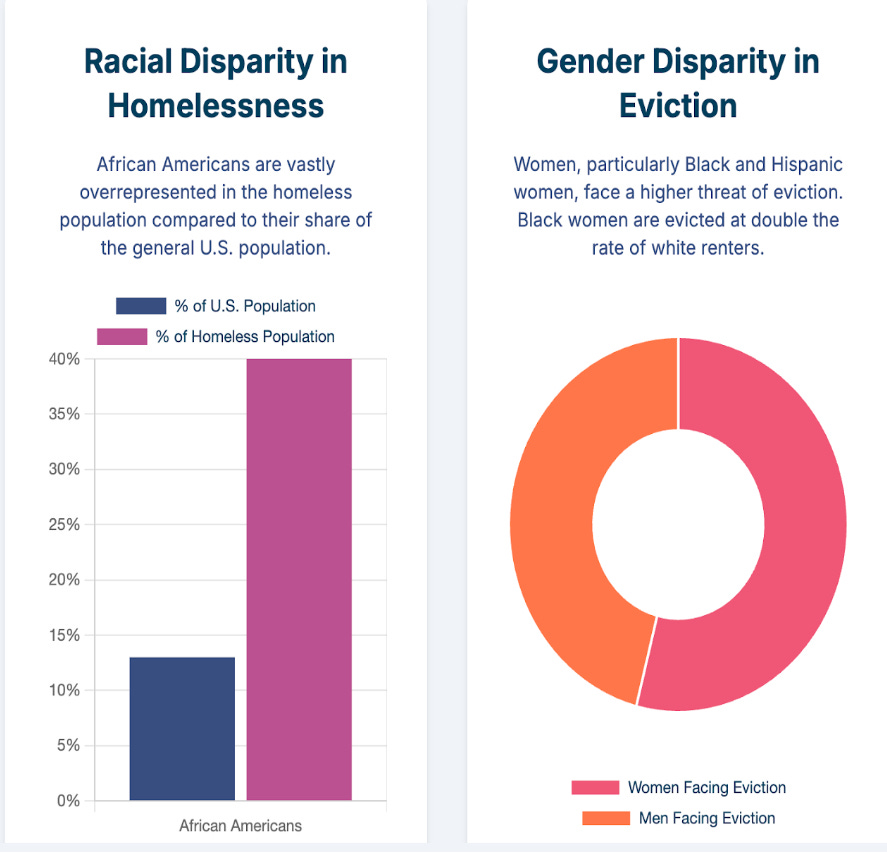From Courtroom to Curb: How eviction is driving a record housing crisis
Families are losing their homes over one month’s rent. The fallout lasts for years—and it’s hitting women and people of color hardest.
Homelessness in America has exploded. In 2024, 771,480 people were homeless on any given night—an 18% increase from the year before. Families with children saw the steepest rise: nearly 150,000 kids slept without a permanent home¹. The top driver? Eviction. And it’s not just a temporary setback—it’s a long-term life disrupter.
One Court Order, Years of Fallout
Research shows that receiving an eviction order can triple the odds of landing in a homeless shelter within a year². The damage cascades: income drops by hundreds of dollars per quarter, credit scores tank, housing instability spikes, and mental health crises soar³.And that’s just what’s documented. Nearly half of all forced moves never hit a courtroom—they’re “informal” evictions, like lock changes or utility shutoffs⁴. That means the real scale of displacement is far larger than any official statistic.
The Math That Pushes People Out
Eviction is often the tipping point in a bigger crisis: America’s shortage of affordable housing. For every 100 extremely low-income renters, there are just 36 affordable units available⁵. Meanwhile, rents have surged nearly 23% since 2020⁶.
Most tenants in eviction court owe less than a month’s rent⁷. It’s not chronic nonpayment—it’s that one unexpected bill, a missed paycheck, or a medical emergency can push a family from stability to the curb.
The Pandemic’s Brief Safety Net
For a short window, we saw what worked. Pandemic-era eviction moratoriums, rental assistance, and expanded child tax credits kept people in their homes. In New York City, evictions dropped steadily until 2020—and then flatlined under the moratorium. When it ended, 14,000 eviction warrants were ready to go⁸. That wasn’t a return to “normal.” It was a policy choice to let displacement resume at full speed.
Disproportionate Impact
Eviction doesn’t hit everyone equally. Black women renters face eviction at twice the rate of white renters⁹. Black Americans make up just 13% of the U.S. population but 40% of all people experiencing homelessness¹⁰. These disparities are no accident—they’re the result of decades of discriminatory housing policy and zoning rules that keep communities of color in the most precarious positions.
We Already Know the Fix
Eviction prevention works—and it’s cheaper than dealing with homelessness after the fact.
Emergency Rental Assistance can stop displacement before it starts¹¹.
Eviction mediation resolves disputes before court—one program kept 85% of tenants in their homes¹².
Legal representation for tenants flips the odds—those with counsel win or settle 96% of cases¹³.Combine these with serious investment in affordable housing, and the crisis would shrink dramatically.
Policy, Not Fate Homelessness isn’t inevitable. It’s the predictable result of policy choices that value budgets over stability, landlords’ leverage over tenants’ rights. If we want fewer families on the street, we need to stop treating housing as a luxury and start treating it as a human right.
Because once the sheriff’s notice is on the door, it’s not just a housing problem anymore—it’s the start of a years-long spiral. And we have the power to stop it.
Endnotes
U.S. Department of Housing and Urban Development. The 2024 Annual Homelessness Assessment Report (AHAR) to Congress, Part 1. HUD User, 2024.Collinson, Robert, and David Reed. “The Effects of Evictions on Low-Income Households.” NYU Law, 2020.
“Eviction and Poverty in American Cities.” Proceedings of the National Academy of Sciences, vol. 119, no. 8, 2022.
Institute for Research on Poverty. Eviction Prevention: Reducing Harm to Households and Society. University of Wisconsin–Madison, 2023.
National Low Income Housing Coalition. “The Gap: A Shortage of Affordable Homes.” 2024.
National Alliance to End Homelessness. 2024 State of Homelessness Report. 2024.
National Association of Social Workers. “National Eviction Crisis in the Era of the Coronavirus Pandemic.” 2021.
New York City Council. “Preparation for the End of the Eviction Moratoriums.” 2022.
Eviction Lab. Eviction Tracking System. Princeton University, 2024.
National Alliance to End Homelessness. “Racial Disparities in Homelessness in the United States.” 2023.
National League of Cities. Eviction Prevention as a Strategy to Reduce Homelessness. 2025.
Ibid.
Minnesota Legal Aid. “Right to Counsel Pilot Program Outcomes.” 2023.







thanks for talking about this. I try to do the same: https://exploringhumans.substack.com/p/do-you-hear-the-scream